Chapter Outline:
4.0 Introduction
4.1 Access Control Lists
4.2 Firewall Technologies
4.3 Zone-Based Policy Firewalls
4.4 Summary
Section 4.1: Access Control List
Upon completion of this section, you should be able to:
- Configure standard and extended IPv4 ACLs using CLI.
- Use ACLs to mitigate common network attacks.
- Configure IPv6 ACLs using CLI.
Topic 4.1.1: Configuring Standard and Extended IPv4 ACLs with CLI
Introduction to Access Control Lists
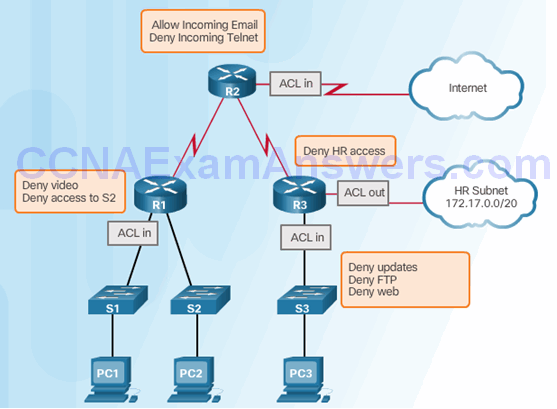
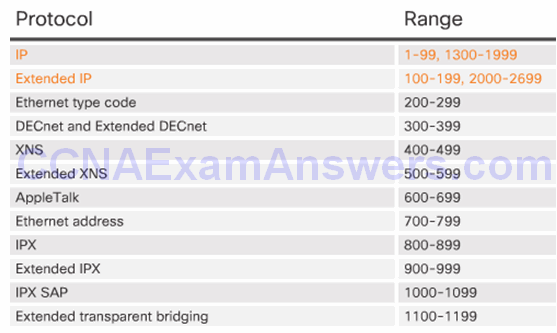
Configuring Numbered and Named ACLs
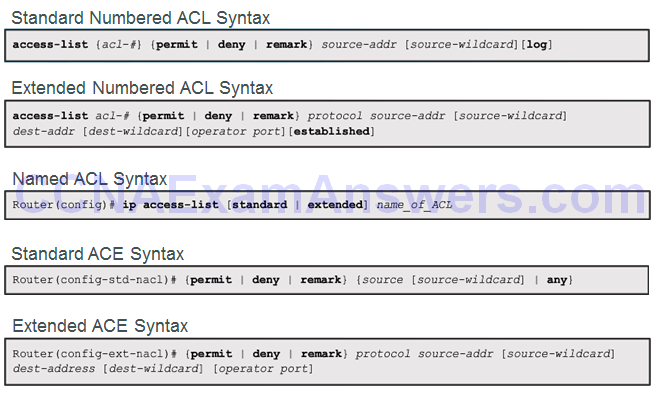
Applying an ACL
Syntax – Apply an ACL to an interface
![]()
Syntax – Apply an ACL to the VTY lines
![]()
Example – Named Standard ACL
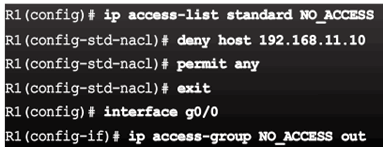
Example – Named Extended ACL
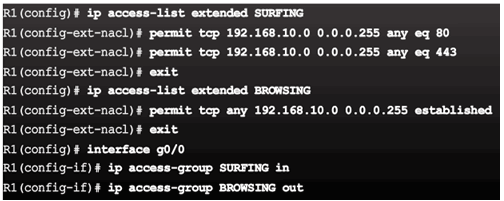
Syntax – Apply an ACL to the VTY lines
![]()
Example – Named ACL on VTY lines with logging
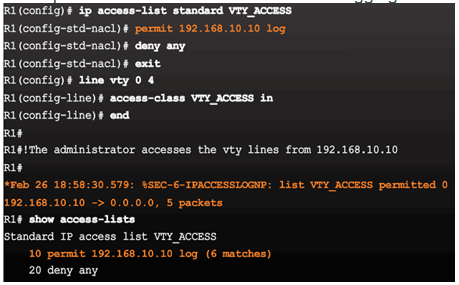
ACL Configuration Guidelines

Editing Existing ACLs
Existing access list has three entries

Access list has been edited, which adds a new ACE and replaces ACE line 20.

Updated access list has four entries

Sequence Numbers and Standard ACLs
Existing access list has four entries

Access list has been edited, which adds a new ACE that permits a specific IP address.
![]()
Updated access list places the new ACE before line 20

Topic 4.1.2: Mitigating Attacks with ACLs
Antispoofing with ACLs
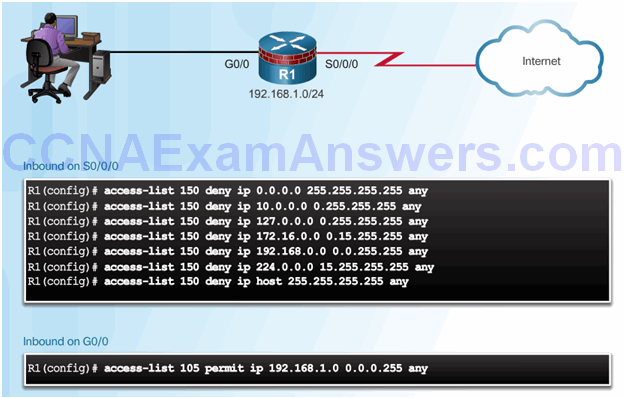
Permitting Necessary Traffic through a Firewall
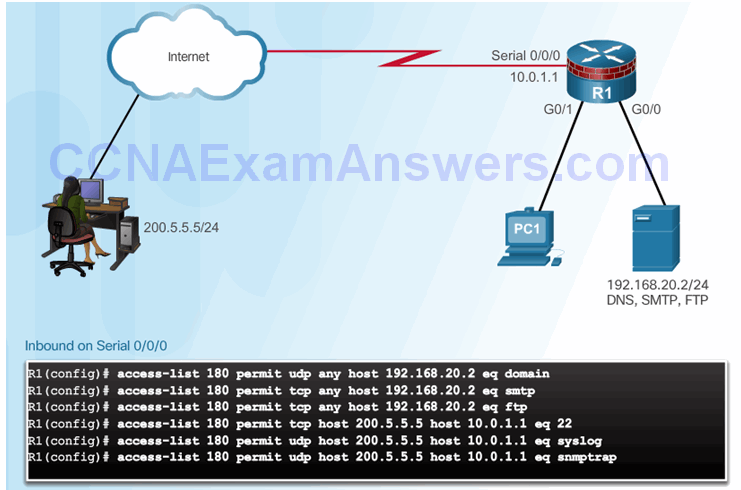
Mitigating ICMP Abuse
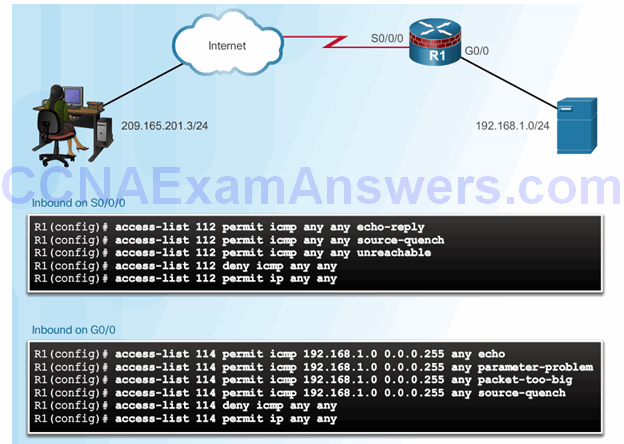
Mitigating SNMP Exploits
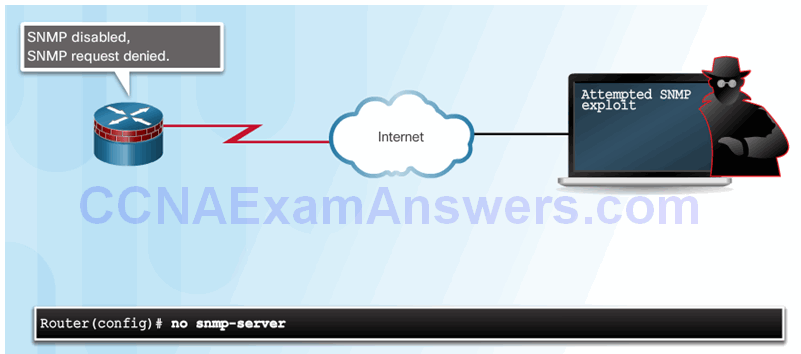
Topic 4.1.3: IPv6 ACLs
Introducing IPv6 ACLs

IPv6 ACL Syntax
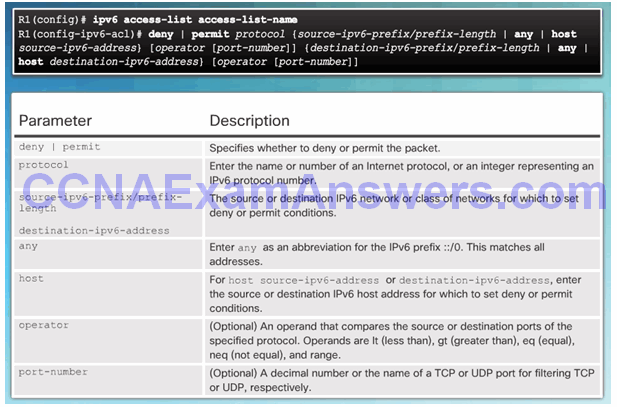
Configure IPv6 ACLs
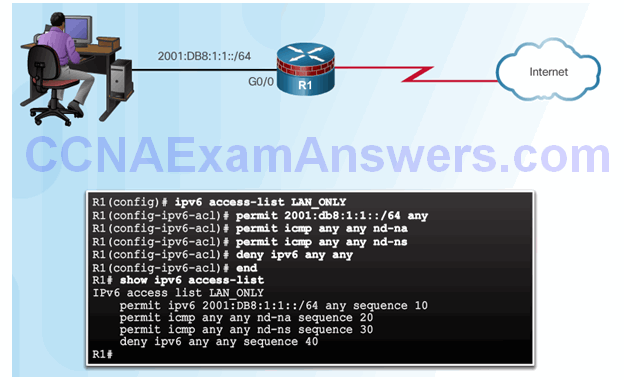
Section 4.2: Firewall Technologies
Upon completion of this section, you should be able to:
- Explain how firewalls are used to help secure networks.
- Describe the various types of firewalls.
- Configure a classic firewall.
- Explain design considerations for implementing firewall technologies.
Topic 4.2.1: Securing Networks with Firewalls
Defining Firewalls
All firewalls:
- Are resistant to attack
- Are the only transit point between networks because all traffic flows through the firewall
- Enforce the access control policy
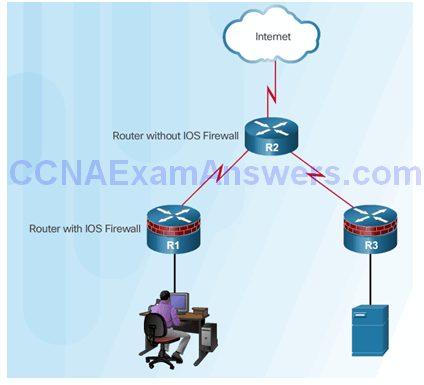
Benefits and Limitations of Firewalls
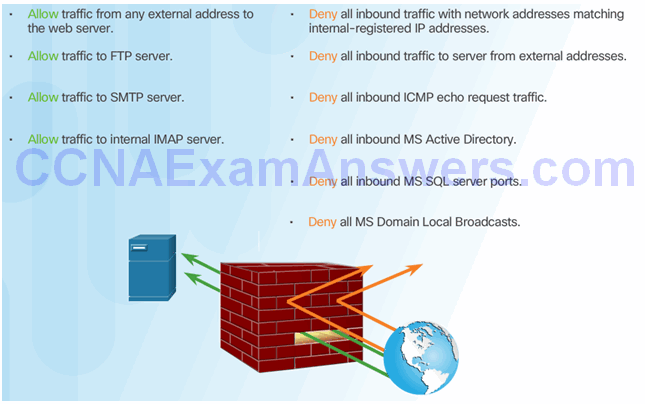
Topic 4.2.2: Types of Firewalls
Firewall Type Descriptions
Packet Filtering Firewall
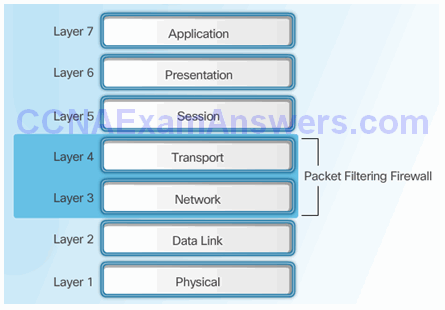
Application Gateway Firewall
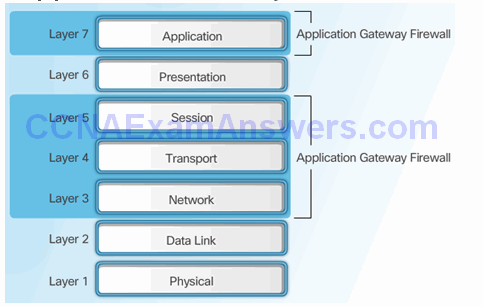
Stateful Firewall
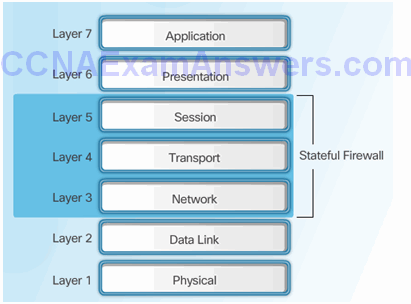
NAT Firewall
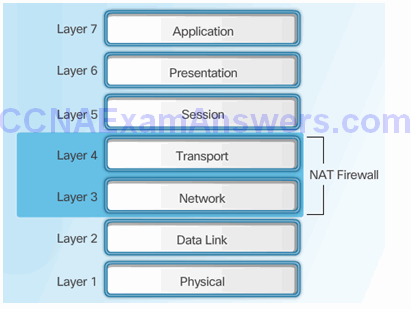
Packet Filtering Firewall Benefits & Limitations
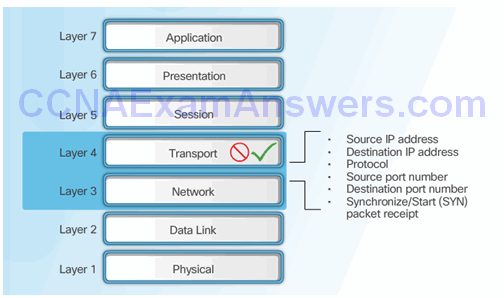
Stateful Firewalls
Stateful Firewalls
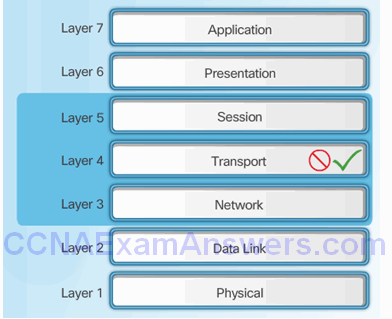
State Tables
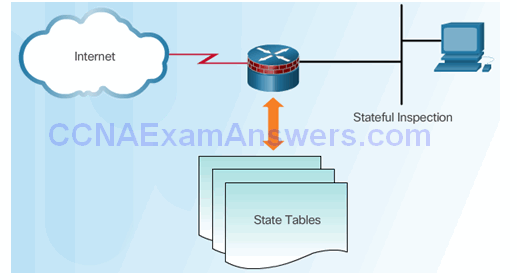
Stateful Firewall Operation
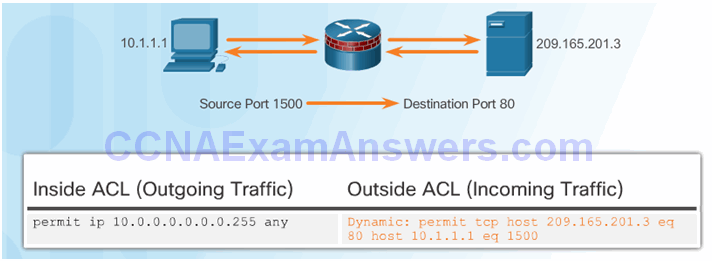
Stateful Firewall Benefits and Limitations

Next Generation Firewalls
- Granular identification, visibility, and control of behaviors within applications
- Restricting web and web application use based on the reputation of the site
- Proactive protection against Internet threats
- Enforcement of policies based on the user, device, role, application type, and threat profile
- Performance of NAT, VPN, and SPI
- Use of an IPS
Topic 4.2.3: Classic Firewall
Introducing Classic Firewall
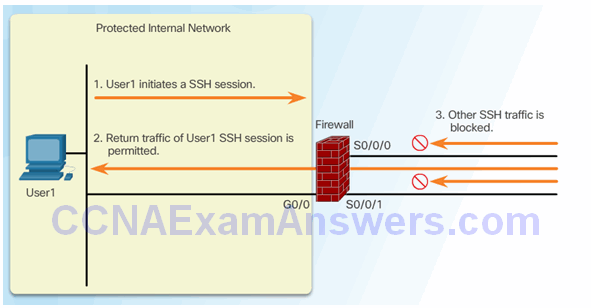
Classic Firewall Operation
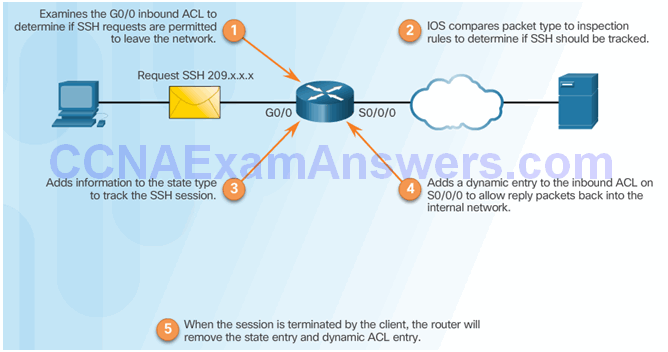
Classic Firewall Configuration
- Choose the internal and external interfaces.
- Configure ACLs for each interface.
- Define inspection rules.
- Apply an inspection rule to an interface.
Inspection Rules
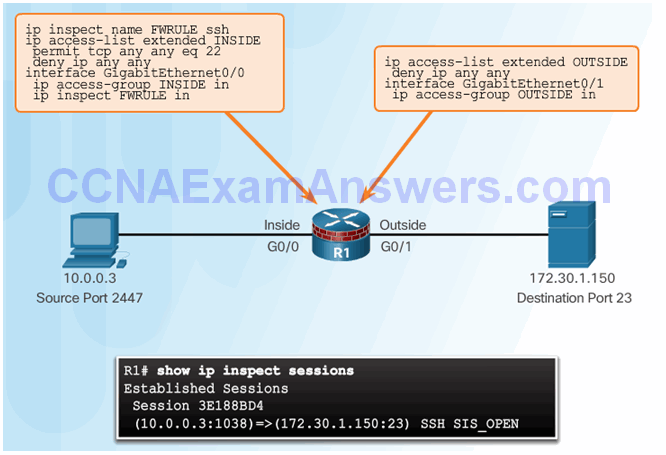
Topic 4.2.4: Firewalls in Network Design
Inside and Outside Networks
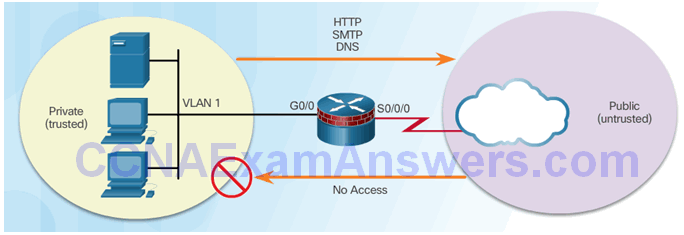
Demilitarized Zones
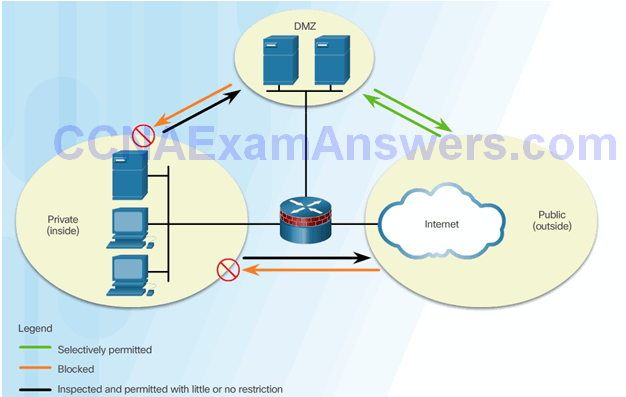
Zone-Based Policy Firewalls
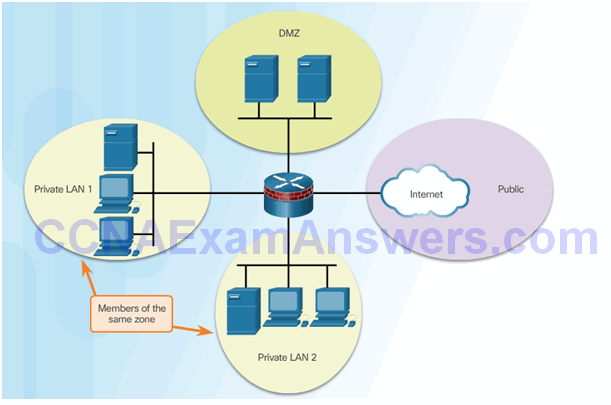
Layered Defense
Considerations for network defense:
- Network core security
- Perimeter security
- Endpoint security
- Communications security
Firewall best practices include:
- Position firewalls at security boundaries.
- It is unwise to rely exclusively on a firewall for security.
- Deny all traffic by default. Permit only services that are needed.
- Ensure that physical access to the firewall is controlled.
- Monitor firewall logs.
- Practice change management for firewall configuration changes.
- Remember that firewalls primarily protect from technical attacks originating from the outside.
Section 4.3: Zone-Based Policy Firewalls
Upon completion of this section, you should be able to:
- Explain how Zone-Based Policy Firewalls are used to help secure a network.
- Explain the operation of a Zone-Based Policy Firewall.
- Configure a Zone-Based Policy Firewall with CLI.
Topic 4.3.1: Zone-Based Policy Firewall Overview
Benefits of ZPF
- Not dependent on ACLs
- Router security posture is to block unless explicitly allowed
- Policies are easy to read and troubleshoot with C3PL
- One policy affects any given traffic, instead of needing multiple ACLs and inspection actions
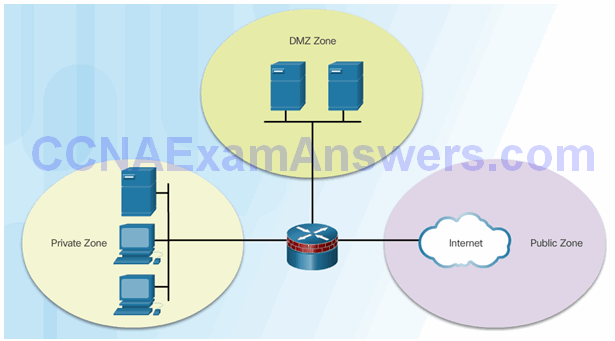
ZPF Design
Common designs include:
- LAN-to-Internet
- Firewalls between public servers
- Redundant firewalls
- Complex firewalls
Design steps:
- Determine the zones
- Establish policies between zones
- Design the physical infrastructure
- Identify subsets within zones and merge traffic requirements
Topic 4.3.2: ZPF Operation
ZPF Actions
- Inspect – Configures Cisco IOS stateful packet inspections.
- Drop – Analogous to a deny statement in an ACL. A log option is available to log the rejected packets.
- Pass – Analogous to a permit statement in an ACL. The pass action does not track the state of connections or sessions within the traffic.
Rules for Transit Traffic

Rules for Traffic to the Self Zone

Topic 4.3.3: Configuring a ZPF
Configure ZPF
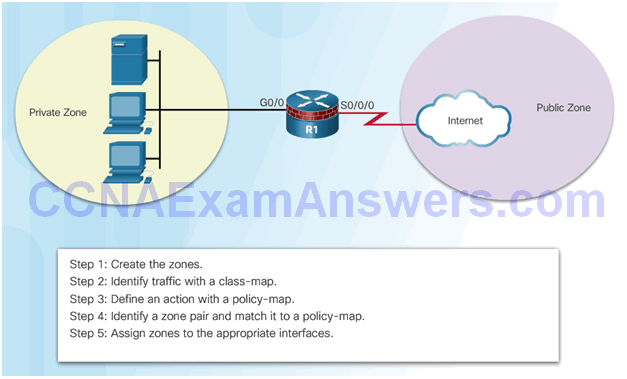
Step 1: Create Zones
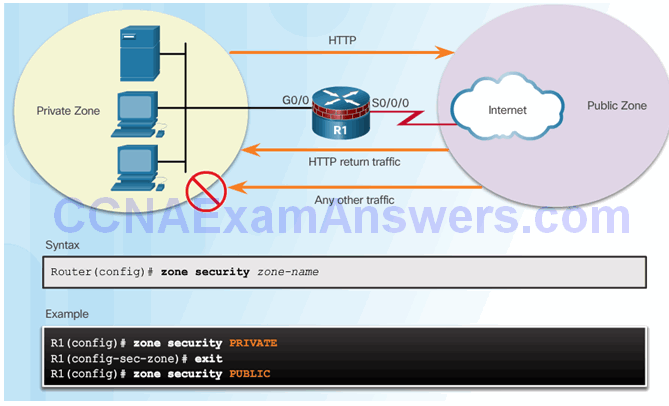
Step 2: Identify Traffic
Command Syntax for class-map
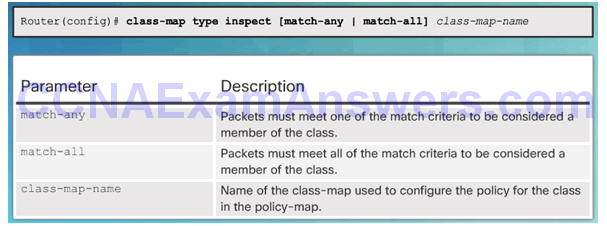
Sub-Configuration Command Syntax for class-map
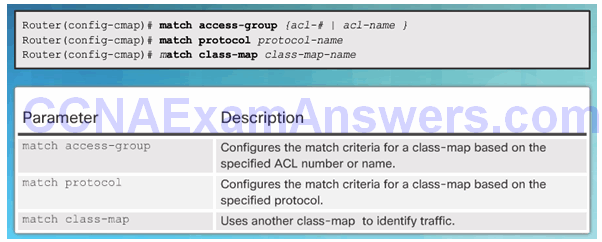
Example class-map Configuration
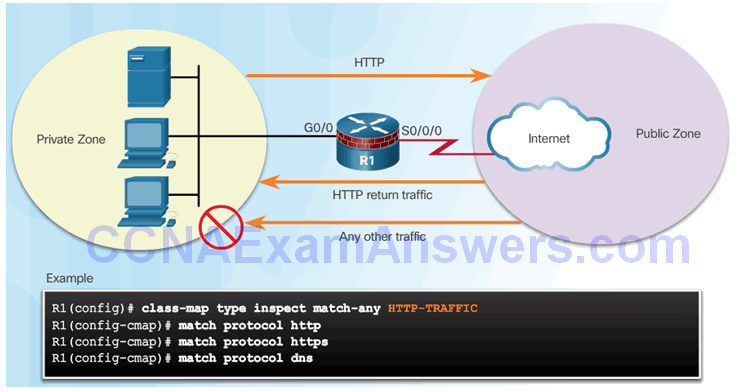
Step 3: Define an Action
Command Syntax for policy-map
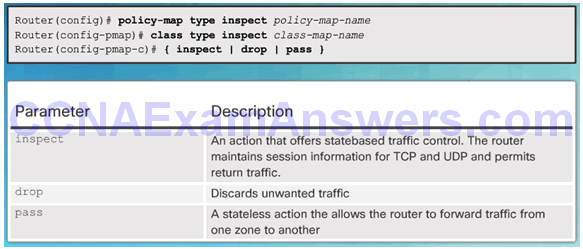
Example policy-map Configuration
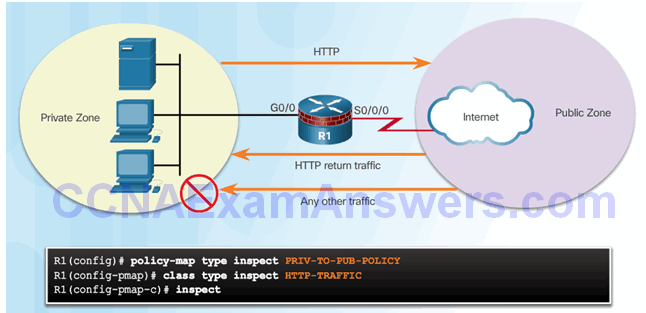
Step 4: Identify a Zone-Pair and Match to a Policy
Command Syntax for zone-pair and service-policy
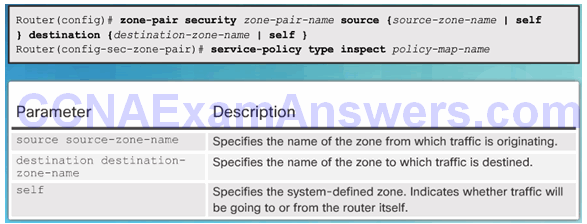
Example service-policy Configuration
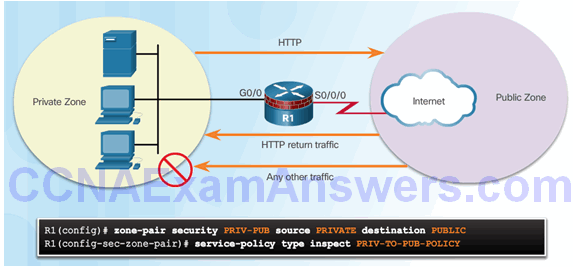
Step 5: Assign Zones to Interfaces
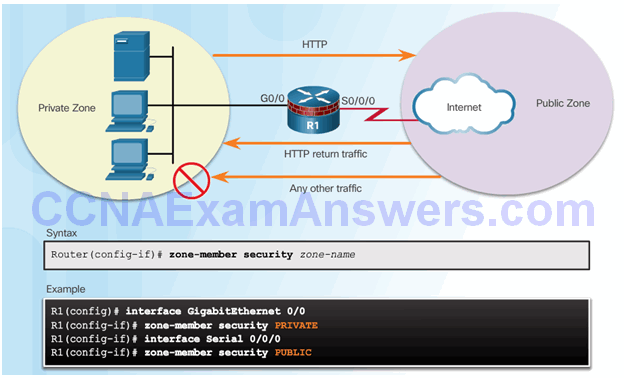
Verify a ZPF Configuration
Verification commands:
- show run | begin class-map
- show policy-map type inspect zone-pair sessions
- show class-map type inspect
- show zone security
- show zone-pair security
- show policy-map type inspect
ZPF Configuration Considerations
- No filtering is applied for intra-zone traffic
- Only one zone is allowed per interface.
- No Classic Firewall and ZPF configuration on same interface.
- If only one zone member is assigned, all traffic is dropped.
- Only explicitly allowed traffic is forwarded between zones.
- Traffic to the self zone is not filtered.
Section 4.4: Summary
Chapter Objectives:
- Implement ACLs to filter traffic and mitigate network attacks on a network.
- Configure a classic firewall to mitigate network attacks.
- Implement ZPF using CLI.
Download Slide PowerPoint (pptx):
[sociallocker id=”2293″][wpdm_package id=’2950′][/sociallocker]
